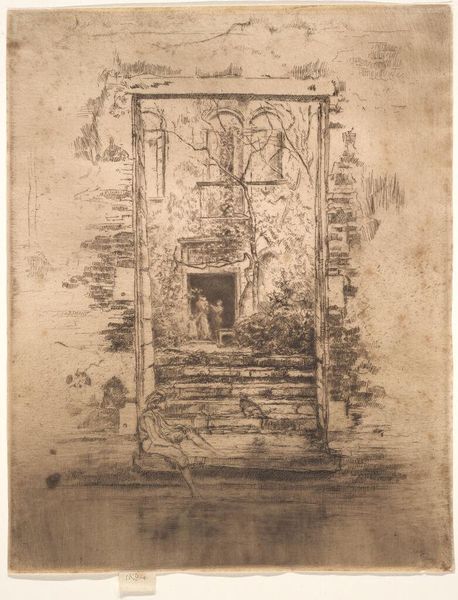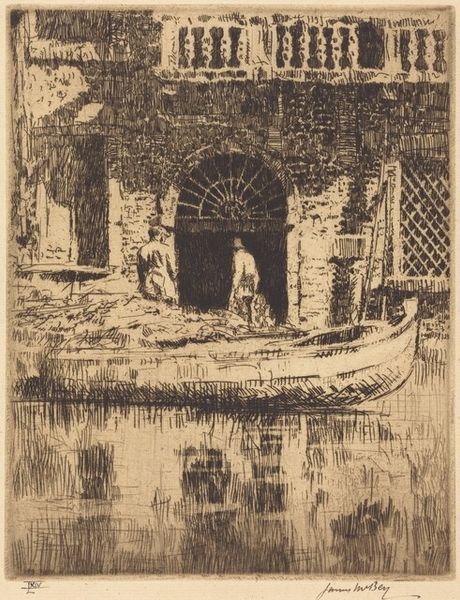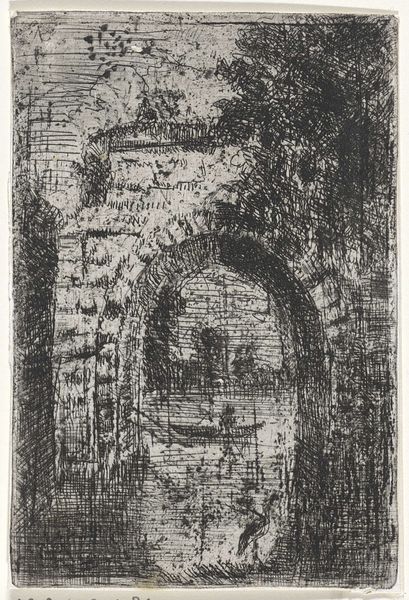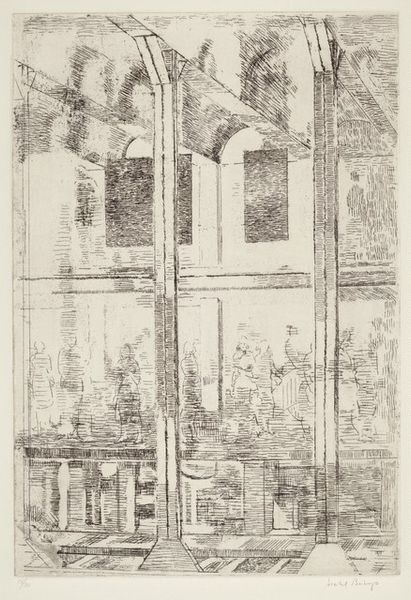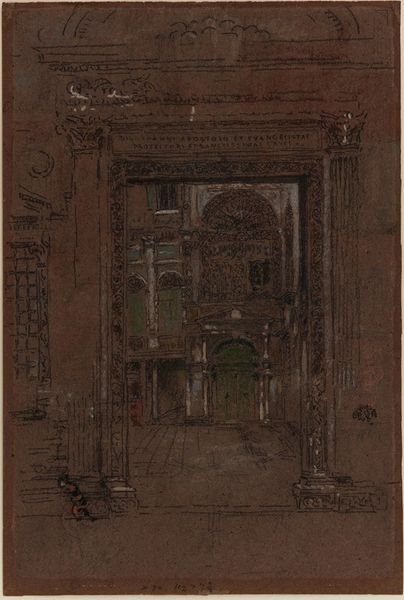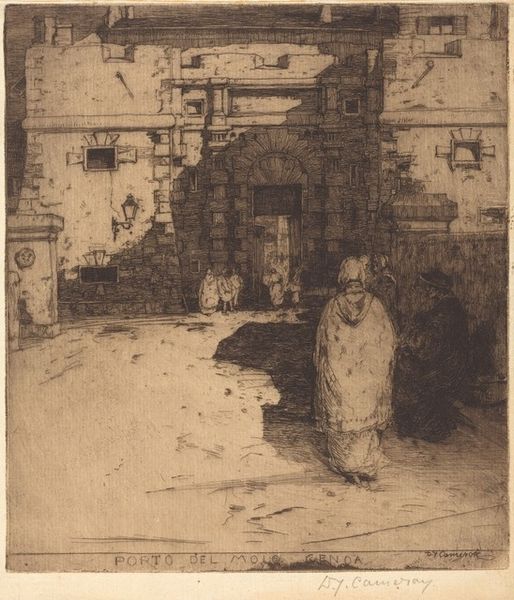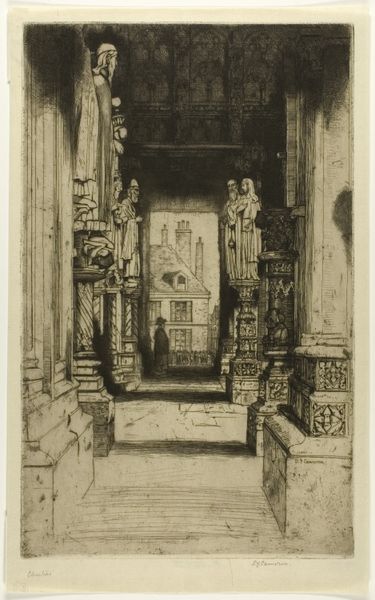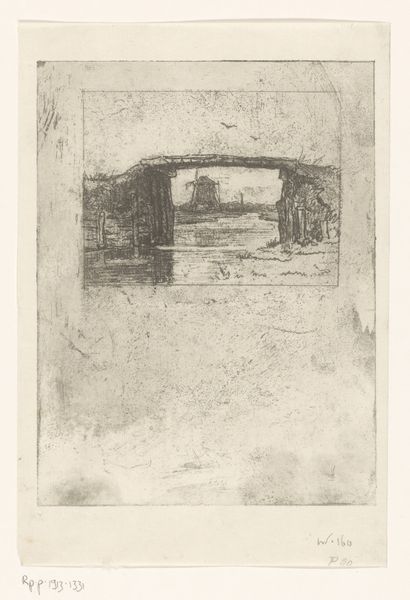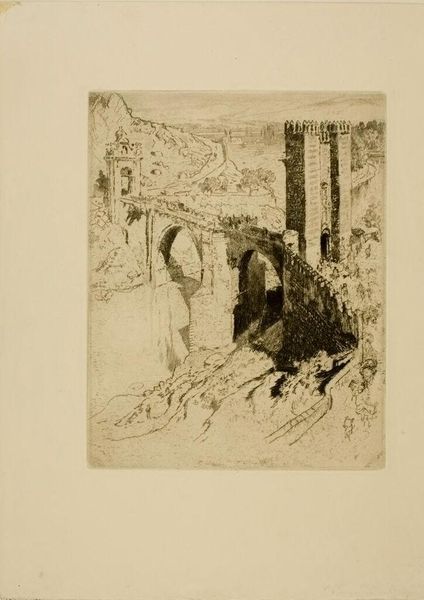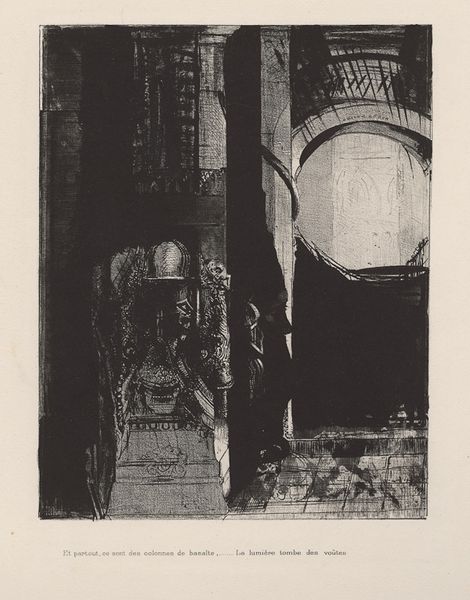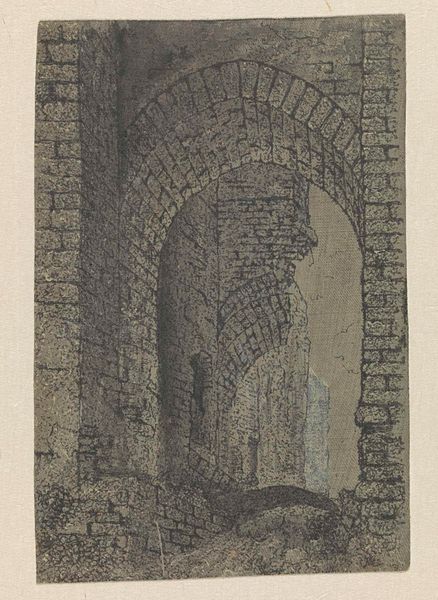
drawing, print, etching
#
drawing
# print
#
etching
#
cityscape
#
realism
Copyright: Public Domain: Artvee
Curator: Before us is "The Doorway," an etching crafted around 1879 by James Abbott McNeill Whistler. Editor: There's a distinct melancholy emanating from this piece, don't you think? A certain hushed reverence achieved through the contrasting interplay of light and shadow, especially with all of the minute ornamental patterning and textured stonework on the facade surrounding that darker threshold. Curator: It certainly is evocative. Whistler was deeply interested in tonal harmonies. Look at how he balances the intricacies of the architectural details with those hazy, soft suggestions of form. It's a visual poem on architectural space, if you will. Notice how that deep recession pulls the eye? The use of chiaroscuro really models form as we explore the intricate ornamentation framing the titular subject: "The Doorway." Editor: The doorway almost seems to loom; the print makes excellent use of implied line with varying contrast. Whistler captures the mystique and ambience of old Europe masterfully. Was this work done during the artist's time in Venice? It has this very specific air of old-world charm with a hint of the clandestine—an interesting commentary, I think, about the power dynamics suggested through urban planning. These buildings, as symbols of Venetian power, seem quite vulnerable here, open to scrutiny. Curator: Exactly. This piece does hail from Whistler's Venetian period. He was commissioned to produce a set of etchings capturing scenes from Venice; however, rather than focusing on its iconic landmarks, he chose to portray the everyday lives of its inhabitants, often zeroing in on quieter corners. I mean, simply observe that subtle triangulation. What at first seems organic soon emerges as rigidly and geometrically organized; and, that play between geometry and the loose form of human beings creates something beyond mere picture making. Editor: The placement of figures really does seem to breathe life into the image and bring it into the real world. Instead of seeing Venetian grandiosity, the audience encounters working people trying to live, with dignity, under that symbolic weight of aristocracy and architectural power—an interesting human tension. Whistler appears to have used art as a method to communicate these complex relationships in a visually compelling way. I find his choice of subject, composition, and lighting nothing short of magnificent! Curator: I agree; the architectural framing is central to Whistler's ability to model complex perspectives—to both draw us in and make us conscious of his work as art. Editor: Overall, a powerful statement then, through deceptively simple means.
Comments
No comments
Be the first to comment and join the conversation on the ultimate creative platform.
